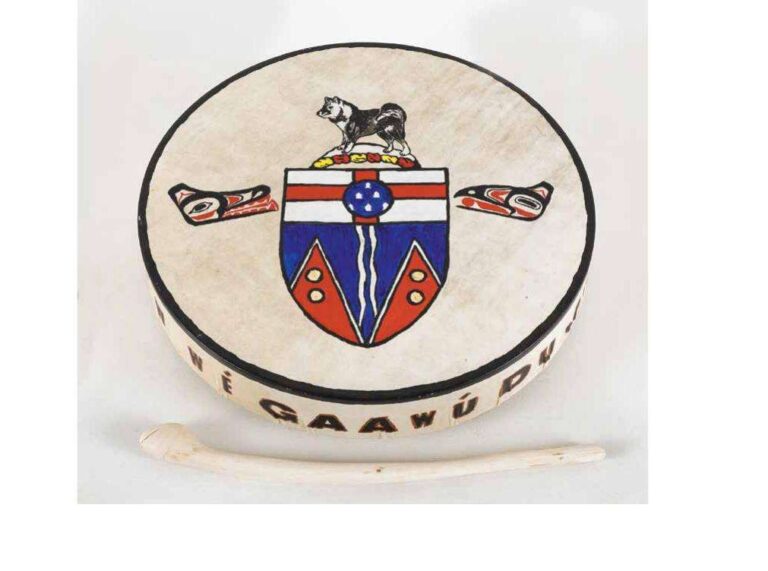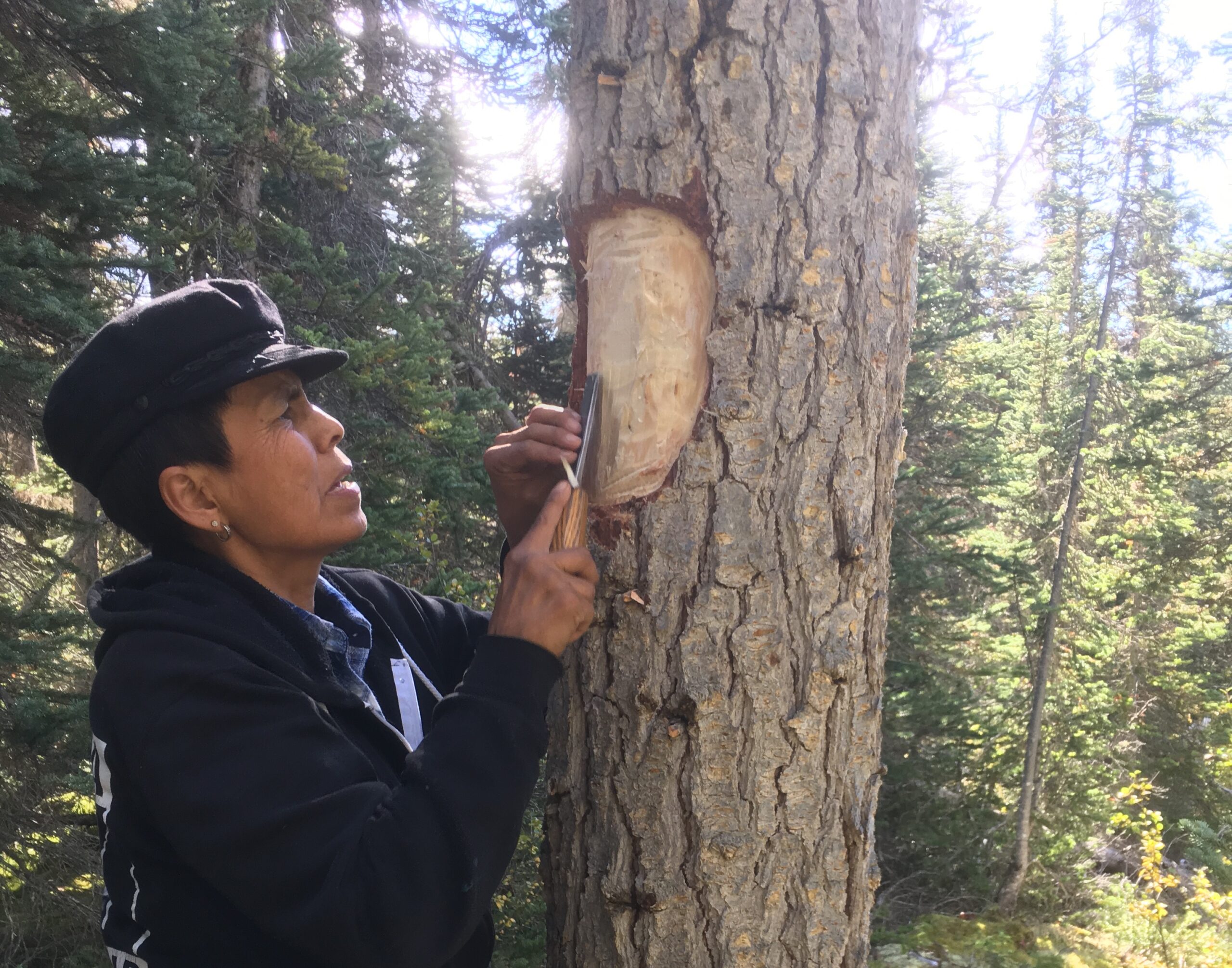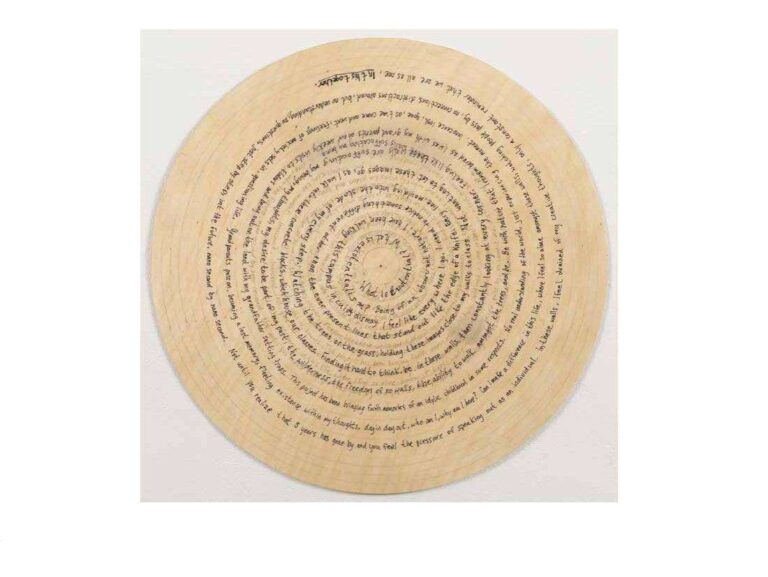Barb Dawson knew she wanted to become an artist.
Although she had taken a number of arts courses throughout the years, it wasn’t until she came to UBC Okanagan that she was able to pursue her dream full time as Visual Arts student. Through discussions with her professors and visits back to her First Nations community, the Taku River Tlingits, she found her artistic voice. After graduating as valedictorian, Barb’s career will take her back to her Tlingit community to work alongside the established artists there, in order to help others feel and express their culture through art.
What was your path to UBC?
The arts were always been a passion of mine, and acquiring a Bachelor of Fine Arts degree was my dream since I was a child. I have had the pleasure of taking part in many arts programs throughout the years but had not been able to pursue it fully up until 2014. That was when I signed my son up for the Aboriginal Programs and Services Culture camp at UBC Okanagan, and saw their Aboriginal Access pamphlet. I took one, followed all the instructions, and here I am six years later.
What was the best thing about the Visual Arts program?
It took a while to feel comfortable in my first year because I had not attended a university for some time, and I wasn’t sure what to expect. I wish I had a student mentor, however finding out about programs and services on my own gave me an opportunity to get to know the campus on my own terms. This helped me discover more about the Faculty of Creative Critical Studies: my second home for four of my six years at UBC Okanagan. In that time, I enjoyed meeting the professors and other students, who were all very interesting. Building a community was the best part of UBC.
How did the Visual Arts program at UBC help you find your artistic voice?
This was something that had occupied my thoughts for years, but being in the Faculty of Creative Critical Studies help me find my direction and vision. I had a lot of great conversations with my professors, and we spoke a lot about culture, and where I thought I belonged in my community. With much introspection and visits back to my community, I was able to flesh out my story and how I wanted to present it. With guidance from my professors, I discovered my voice.
Can you describe the style of art you work in?
I’m a multidisciplinary artist working in acrylics and screen printing. In my classes I focused on ways of expressing the tradition I grew up with in my grandfather and grandmother’s house. I’ve looked at ways of expressing my memory and ways of communicating my cultural experience as a child. Painting is one of my favourite mediums – it’s flexible, and it’s one of the first mediums I worked with.
Can you describe one piece of art you’re particularly proud of?
The drum that I painted is my proudest. The drum is painted with a design that is similar to one that my grandfather’s drum had been decorated with. It’s part of my memories of him – a recreated memory of my grandfather. It took a while to decide what I was going to paint on it, but once I figured that out, it came together in a beautiful way. I was speaking with Briar Craig one day, talking about stories, when I happen to mention that my grandfather always had a drum. That’s how my journey started, and I call it a journey because of the time that I travelled in my memories to bring this piece together. I painted the words “my grandfather always had a drum” in the Tlingit language – “ax leelk’w we gaawu du jee wu neech”. The phrase refers to my grandfather, George Dawson. He was a keeper of traditions, and hereditary Chief of the Ta’an Dunn First Nation of Lake Lebarge. The title in English, the Tlingit writing circumnavigating the drum’s base, and the drum itself, create a triple echo – concentric ripples. Extrapolated from memory, the creation of the drum is the bond with my grandfather, a pact rekindled in physical form, an instrument for the expression of tradition.

Ax leelk’w we gaawu du jee wu neech. Acrylic paint on Deerhide Drum. Accents of gold leaf. 18″ diameter. 2020.
What are some of the themes that you use your art to explore?
Growing up without speaking your mother tongue is very difficult, especially when you also grew up listening to your grandparents speaking the language you should also be speaking. This is one theme I have been working with – that my identity has been very confusing, as I feel First Nations, but I don’t speak my language, so this makes it hard to identify at times. On the other hand, I identify with my culture by painting my memories.
Did you have a career in mind when you chose the Visual Arts program?
When I joined the Visual Arts program, I knew I wanted to be a full-time artist, and work towards cultural knowledge and sharing of knowledge. My plan now is to go back to my community and work with my First Nations in the revitalization of our arts and culture. I will join my fellow Tlingit artists, and work alongside them, as their protégé. This is my personal observation in the community – that we all need to experience culture, and we all need to feel and express ourselves through art.
What would you say to prospective students who are considering the Visual Arts program at UBC Okanagan?
I would say that the size of the campus had been a benefit to my studies. I enjoyed the convenience of the class sizes and the professors’ willingness to give you their time to discuss the courses and directions. The professors were available to students and very supportive. Extended time to discuss course work was paramount – that’s just one of the positives of having a small campus.
In your opinion, what makes the Visual Arts program unique?
The one thing that really helped in my journey was the fact that the Faculty of Creative and Critical Studies had a very supportive staff. The professors were supportive, helpful and available when I needed assistance on problem solving. This was very valuable, as I had a rough beginning to my university career and needed the support. At a small campus, you can quickly create a community for yourself.

